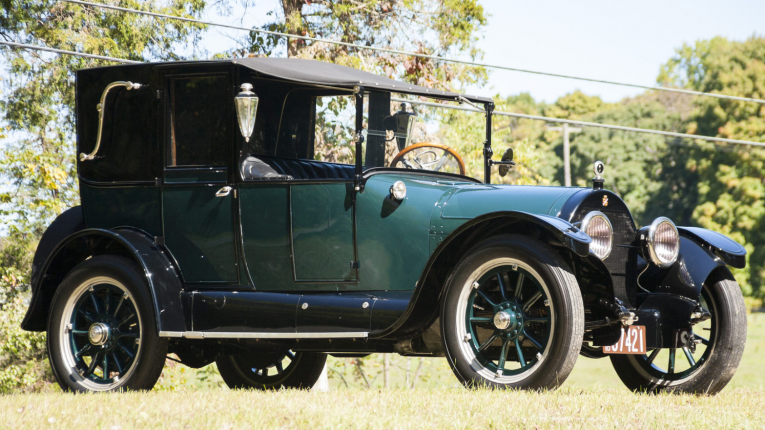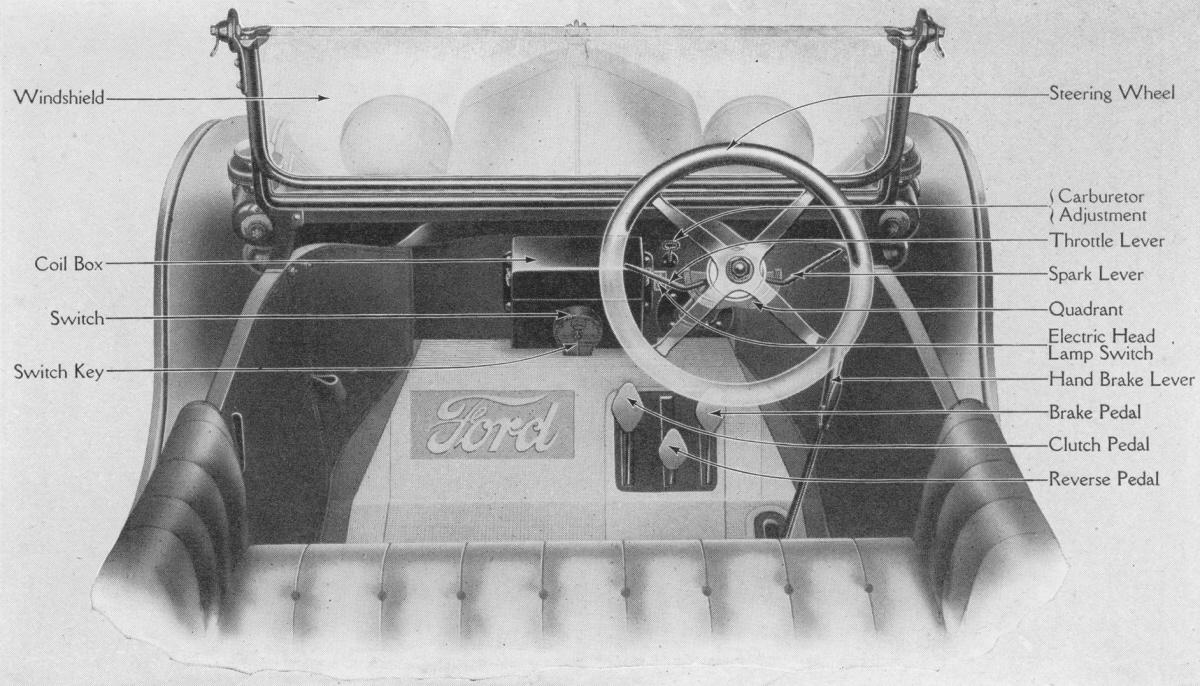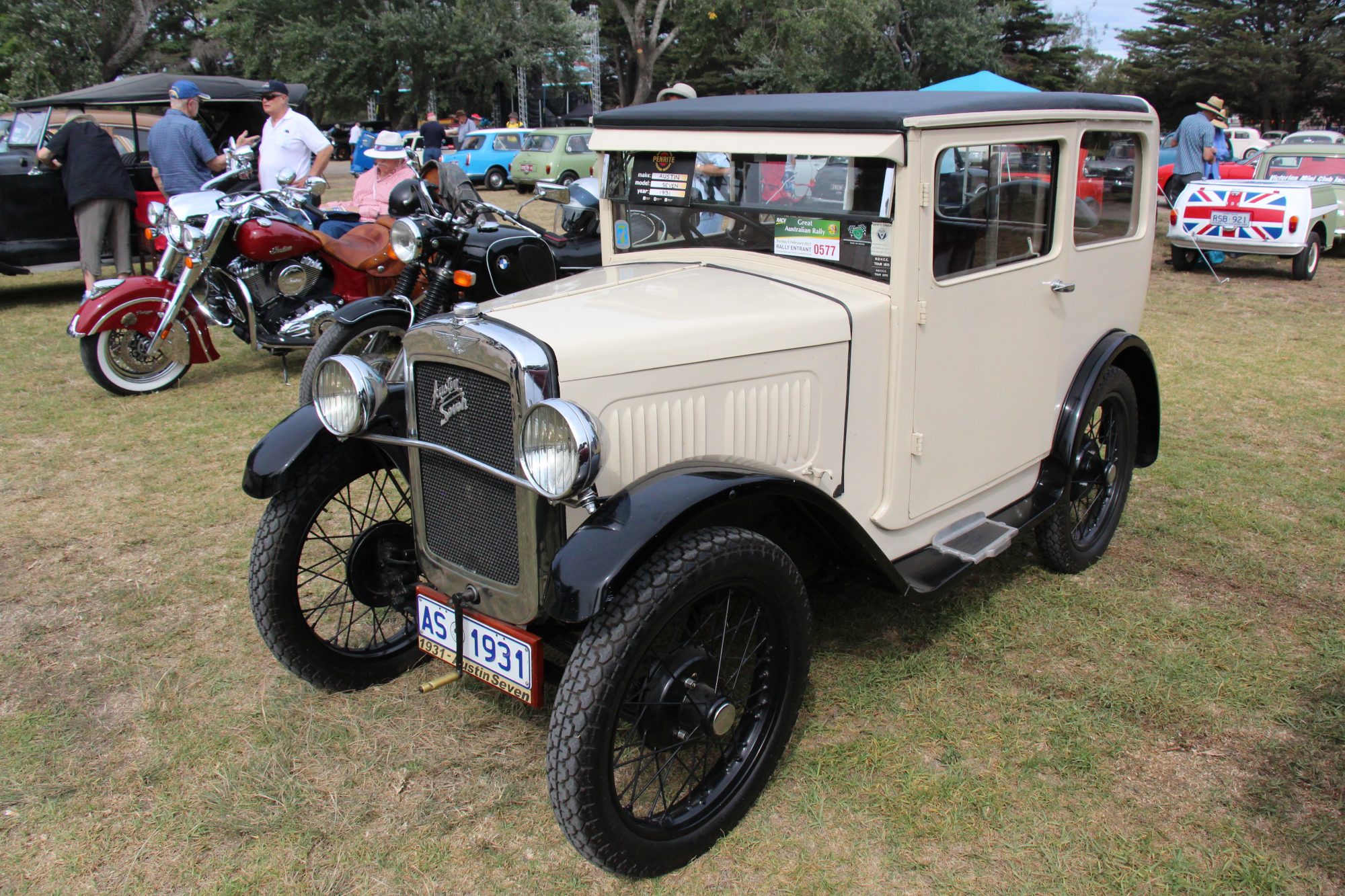The First to Ever… Have ‘Conventional’ Pedals

The early days of the car were somewhat bonkers, but that’s what comes from being unencumbered by trends or traditions. There was no formula, no right or wrong way to do it. As such, workshops around the globe were trying out all kinds of weird and wonderful methods in a bid to bring the car to the masses. The common layout we all know today was not the result of focus testing or development, it was instead the result of luck and chance. The automotive world was awash with ideas, some good, some utterly bonkers (looking at you, tiller steering) and it was down to the consumer to tell the manufacturers what they liked.

The controls for the Ford Model T were… overwhelming
When the steering wheel became common, manufacturers saw it as an opportunity to further refine the driving experience. Or at least they thought they were refining it. In reality, they were making it needlessly complicated by putting the throttle on the steering column, and the spark control on the dash. And then there were the pedals. The most popular car from the dawn of motoring is without a doubt the Ford Model T – it brought motoring to the masses after all. However, it was a worryingly complicated machine to drive. There was a pedal for the high and low speed clutch, a pedal to engage reverse, a pedal to apply the brakes, and a lever to activate the parking brake and also release the clutch. It was, for lack of a better way of putting it, a headache to drive. Just because it brought motoring to the masses, doesn’t mean it did it well. The Model T succeeded because it was mass-produced and as such, cheap. Not because it was easy to drive.
It would have been easy for other car companies to look at the Model T and just accept that the controls employed were the norm. And to a degree, a lot of companies did. However, it was Cadillac that saw how things could be done differently. More intuitively and in a way that was significantly less stressful.

Cadillac decided that the steering wheel should be used for, well, steering. It saw no value in adding knobs, bells and whistles to it. It also looked at the pedal arrangement and saw that to drive a Model T well, you’d need to be Michael Flatley. So instead, the clever Cadillac people engineered a system whereby one pedal was responsible for all the clutch action. Then, next to it, would be the brake. Next to that, there would be a pedal for the throttle. In a time of moving from the horse to the car, it seemed to make sense. We controlled the speed of our steed with our feet, so why not our car?
The car that boasted this now very familiar pedal arrangement was the 1916 Cadillac Type 53. It was a car that was a huge failure. Well, okay, failure is a bit strong. It wasn’t what you’d call a sales success though, that’s for sure. It was only built for one year and it failed to set dealerships alight with footfall. That said, of the small number of people that did buy one, they all keenly reported that it was a joy to drive thanks in no small part to the revolutionary take on the pedal layout.

So then, Cadillac did it first, but it wasn’t the first to popularise it. For that, we have to jump back over the North Atlantic and return to UK shores. Yes, it was here that the C, B, A pedal formation was given a proper and much more popular home, cementing its place in car design for all of time.
The car in question was the Austin 7. For many, it’s considered to be the British Model T, in that it was cheap, plentiful and as such, brought motoring to the masses. Austin liked the relative simplicity of the Type 53’s pedal arrangement and saw it as a good way to go, especially as the tiny Austin wasn’t exactly blessed with a lot of floor space, meaning multiple pedals and levels would have left drivers feeling like they were in a game of KerPlunk.

The baby Austin was a hit, but it wasn’t just its UK success that saw it take Cadillac’s idea into the norm. The Austin 7 seven became a global success. It was BMW’s first car, built under licence and known as the BMW Dixi, it was sold as the Rosengart in France and soon Japan took note of the car’s popularity and also started to copy it, though not under licence, which was somewhat naughty. However, in 1952 that changed, as a deal was drawn up between Austin and Nissan.
Soon the Austin’s layout was deemed as the ‘go to’ thanks to its overwhelming popularity, and while the car itself became dated, the clever layout didn’t, and it lived on in every car to be built after it. Not bad for a little car that was built to mobilise the people.
Fancy a go in the Britsh Model T? Here’s where you can find an Austin 7 for sale.
Cadillac images care of Mecum Auctions.


